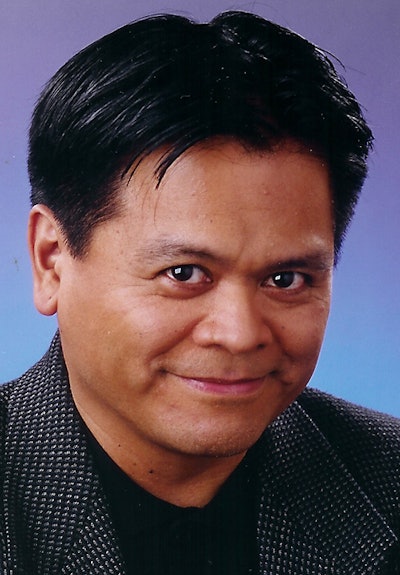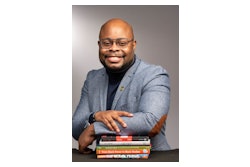Critical Race Theory? What’s that? Don’t be fooled by the mumbo jumbo of critics who would deny the truth in classrooms. CRT has been around for decades and is a legit thing—a way of looking at history through the legal lens of social justice.
But now it’s bandied about as some evil, anti-American indoctrination tool. It most assuredly is not that.
The effect of the rise in CRT, however, has been to make it much harder for stories in American history to come forward and be more widely known.
For example, this Labor Day Week, should we assume this is the time to honor Cesar Chavez and the United Farm Workers for the Great Delano Grape strike in 1965?  Emil Guillermo
Emil Guillermo
Sure. But most people start and stop with Chavez and only pay homage to the Mexican American labor leader.
They forget that the actual instigator of the strike was an Asian American Filipino by the name of Larry Itliong.
Six years ago on the 50th anniversary of the strike that essentially merged both the labor and civil rights movement in America, it was Itliong who called the strike vote that counted on Sept. 7, 1965 in Delano, Calif.
Filipinos were the vast majority of the workers who walked off the job when their demand for a $1.40 hourly wage was not met. Their leader wasn’t Chavez. It was Itliong.
“My dad didn’t do it himself, but he initiated the strike,” Johnny Itliong, Larry’s son, told me. “How did Chavez become the founder of a union he was asked to join? That’s on him for creating that fallacy. Doesn’t mean he didn’t do any good. Just a matter of setting the record straight.”
Most K-12 history texts skip the actual beginning of the strike and take up the story from when Chavez was asked to join on Sept. 16.
For the record, Itliong, the leader of the Agricultural Workers Organizing Committee (AFL-CIO), called for the strike vote in Delano’s Filipino Community Hall on Sept. 7, 1965.
John Armington, whose father, Bob, was a Filipino field laborer, was at the hall that night. His father made the motion.“Larry Itliong yelled out to the packed hall, ‘I want those in favor to stand up with your hand raised,'” John Armington said. “Everyone in that hall stood up with their hands in the air. it was a unanimous decision to call a strike against the grape growers in Delano and vicinity.”
The strike began in earnest the next day on September 8, 1965.Gil Padilla, a co-founder with Chavez of the National Farm Workers Assocation, remembered Chavez’ reaction. “Cesar called me early in the morning,” Padilla said at the 50th anniversary symposium in Delano. Padilla said NFWA didn’t have much membership or money and was not prepared. Initially, Chavez offered to help with pickets and leafletting. Chavez’ NFWA also wasn’t a true union, but an association, and any talk of merging would take negotiation.
“And that’s where Larry Itliong came in,” said Padilla. “I always thought and said Larry Itliong was a very strong man. He was the one who made the decision for the negotiations between NFWA and AWOC. Larry was the one who made sure we merged together…We became a family and we merged.”
That became the true hallmark of the strike–the bringing together of new immigrants –the combined might of the growing labor force coming from Mexico, with the aging and dwindling Filipino labor force that had first arrived to America in the ’20s.In many ways, the new United Farm Workers, the UFW, was a natural evolution of the changing work force in the fields.
“It became clear to Larry that Mexicans were the key to the success of the strike,” said the late Dawn Mabalon, a history professor at San Francisco State who was working on a book on Itliong at the time of her death three years ago. “The only way to win was with each other.”Mabalon said that without cooperation, Filipinos would be used as scabs if Mexicans went on strike, and Mexicans would be scab labor if the Filipinos were on strike.
“The strike fused the community,” Mabalon said.
And in 1965, when people were thinking about civil rights in general, the farmworkers became part of a social justice movement and made America care.
CRT be damned, that’s the story. It’s just American history. With the holes filled in to include it’s full diversity. There were Asian Americans in the fields.
But how many history classes in America even teach the story, or teach it and leave out the diversity in labor, Itliong and the Filipinos.
Emil Guillermo is a journalist and commentator. He writes for the Asian American Legal Defense and Education Fund. He vlogs at www.amok.com. You can follow him on Twitter @emilamok



















